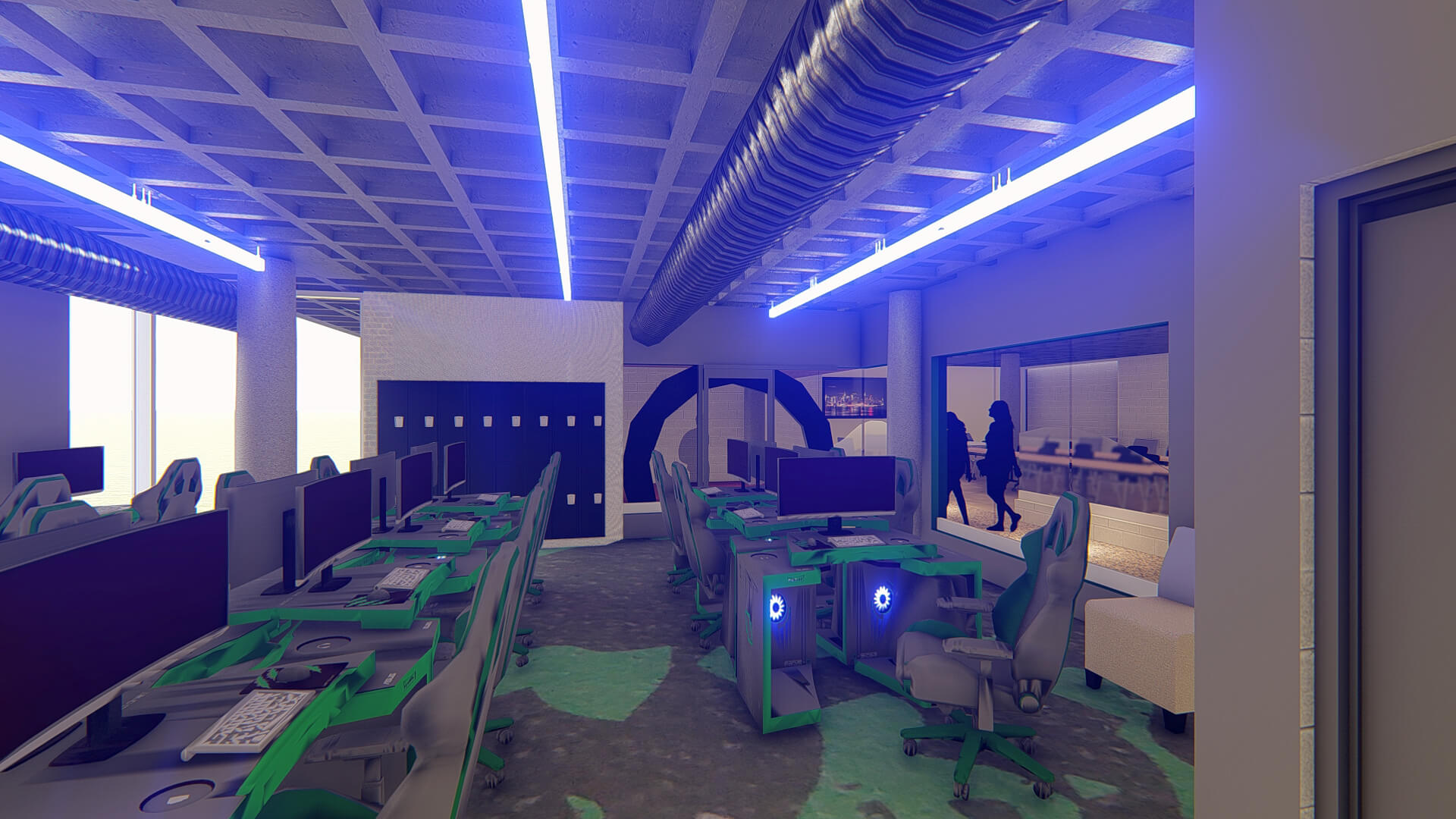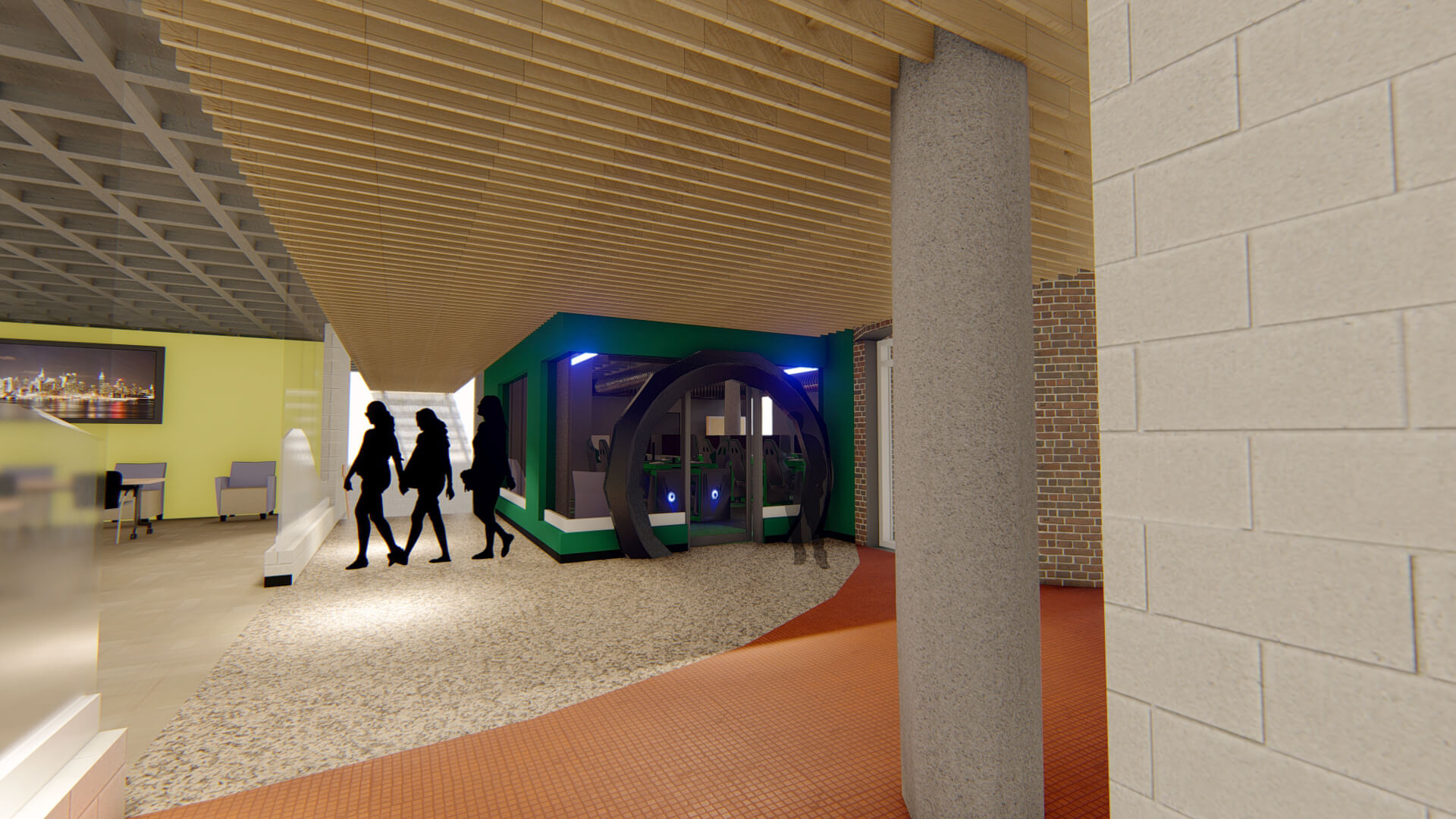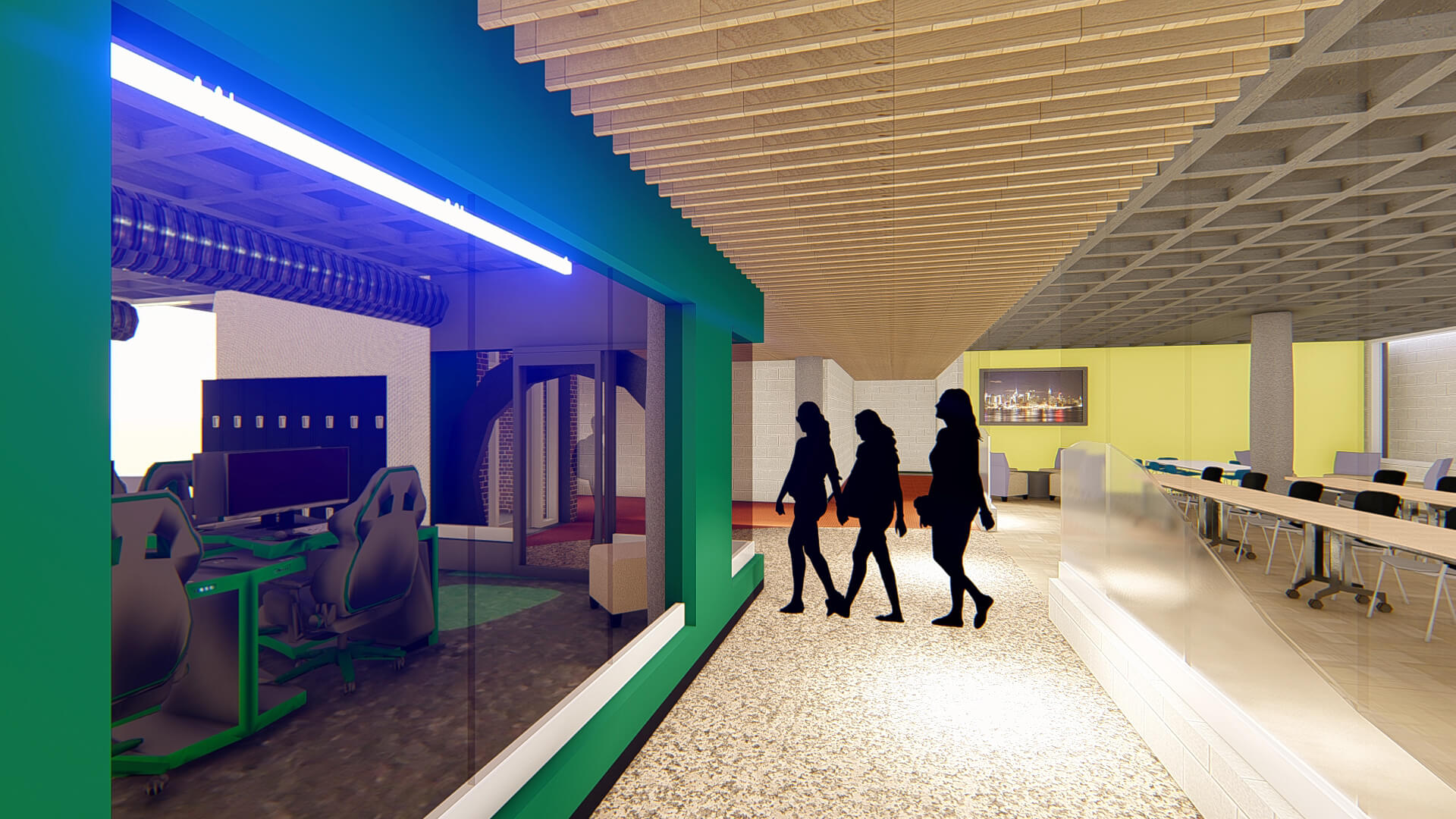
As varsity-level eSports programs expand on college campuses, schools are partnering with professional architects and engineers to design competitive gaming spaces that elevate performance and visibility.
Beardsley Architects + Engineers developed a conceptual interior design for an eSports arena that increases capacity, enhances the gaming experience, and reflects the program’s growing presence.

A Future-Focused Design
The concept expanded the space from 7 to 20 gaming stations and accommodated 25 athletes. Key features included:
- A Star Trek–inspired portal entrance with sliding door
- Clear spectator views through glass panels
- Space for streaming events and team meetings
- A layout optimized for coach visibility from every station
Our architecture and engineering team also reclaimed underutilized square footage to modestly expand the room’s footprint.

Built for Performance
Each station was equipped with a dedicated circuit and Cat 6 data lines. The design included a communications rack, flexible LED lighting, and a rooftop HVAC system to replace the outdated window unit. Custom tables with integrated cable management and new lockers created a more functional and organized space.
Lobby updates featured resinous flooring and branding opportunities, with wall space reserved for future sponsorship and donor recognition—blending identity, functionality, and future growth.
This concept shows how targeted architectural and engineering solutions can transform a campus space into a dynamic hub for varsity eSports.